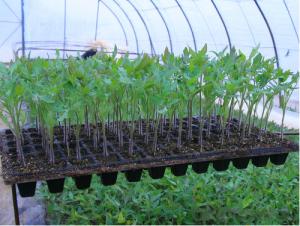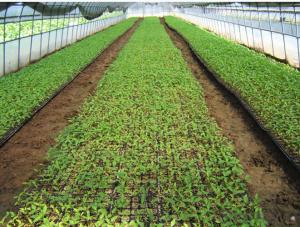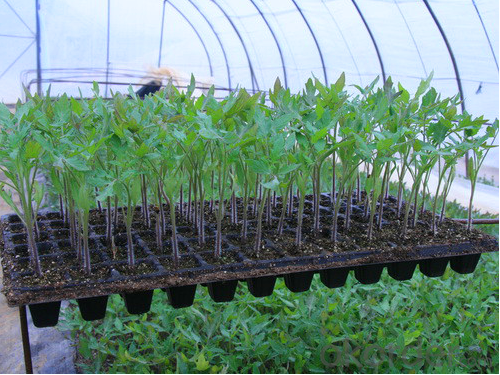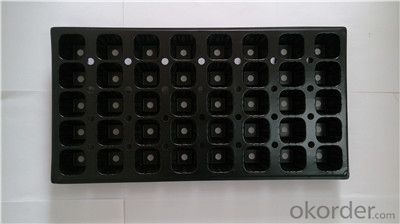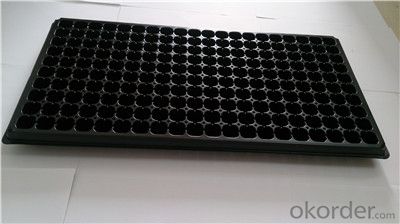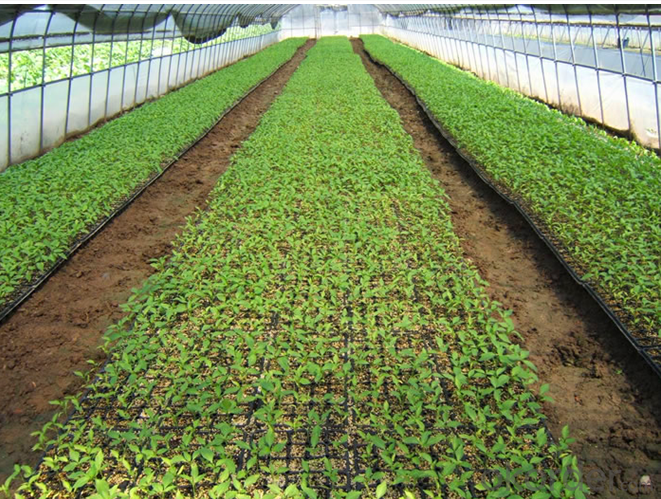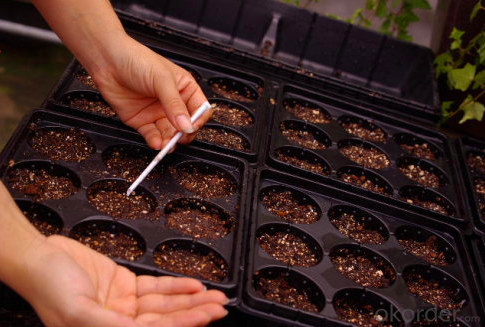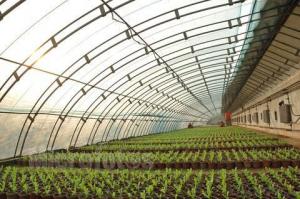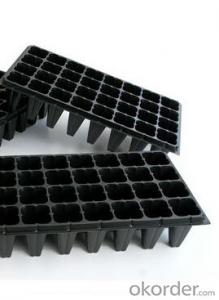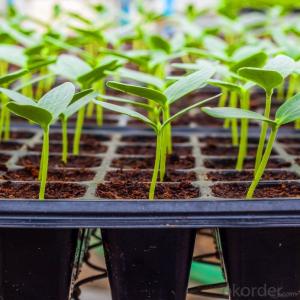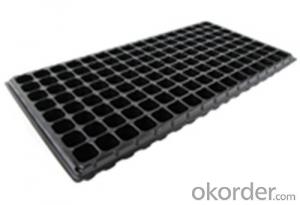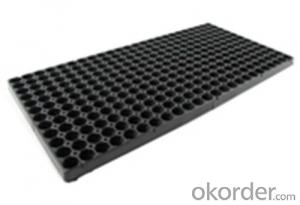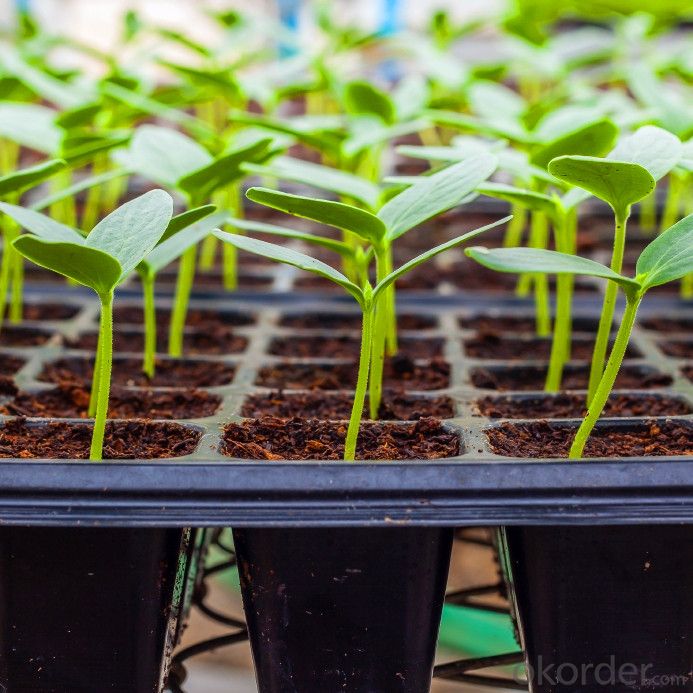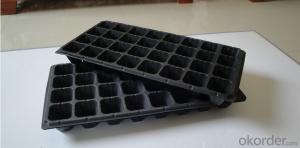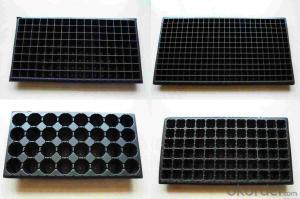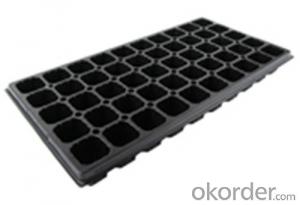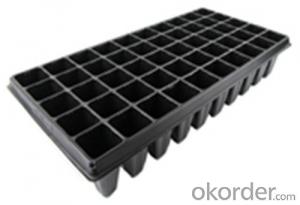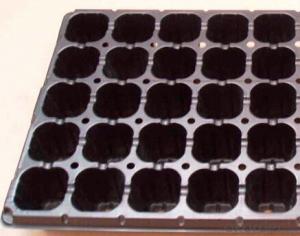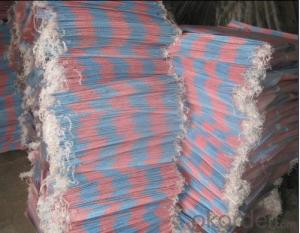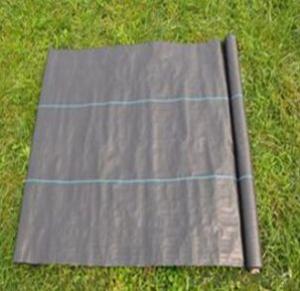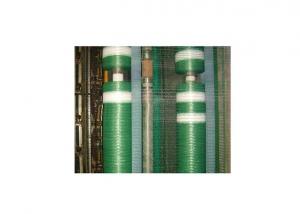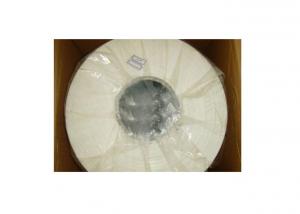Hydroponic Seedling Planting Plastic Seeding Tray for Greenhouse
- Loading Port:
- China main port
- Payment Terms:
- TT OR LC
- Min Order Qty:
- 1000 pc
- Supply Capability:
- 10000000 pc/month
OKorder Service Pledge
OKorder Financial Service
You Might Also Like
Structure of the seed tray: · Top quality and competitive price. · Variety design and good appearance. · Easy to use, and remove. · Durable and reusable. · Eco-Friendly.
Advantages: · Top quality and competitive price. · Variety design and good appearance. · Easy to use, and remove. · Durable and reusable. · Eco-Friendly.
Application: · Ideal for Starting seeds and Transplanting Seedling. · Suitable for both manual and automatic planting. · Suitable for Propagating Vegetables, Flowers and other plant from seed · in green-house or indoors.
Description Main Features of the seed tray: · Ideal for Starting seeds and Transplanting Seedling. · Suitable for both manual and automatic planting. · Suitable for Propagating Vegetables, Flowers and other plant from seed in green-house or indoors. Using time: · thickness of 0.5mm can be used 1 to 2 times. · thickness of 0.6mm can be used 3 to 4 times. · thickness of 0.7mm can be used 5 to 6 times. · thickness of 0.8mm can be used 7 to 8 times. · thickness of 0.9mm can be used 8 to 9 times. · thickness of 1.0mm can be used 8 to 10 times. Thickness vs. Weight: · Thickness of trays are from 0.5mm to 1.0mm. · 1.0mm: 155g±5g; 100pcs/ctn. · 0.9mm: 140g±5g; 120pcs/ctn. · 0.7mm: 110g±5g; 150pcs/ctn. · 0.6mm: 95g±5g; 180pcs/ctn. · 0.5mm: 80g±5g; 200pcs/ctn.
Seed Tray Specification: Materialps/pvcThickness0.5mm-1.5mm, standard:1mmWeight80g(±5)g-230g(±5)g, Standard weight:155g(±5)gSizelength:490mm-540mm, width:190mm-345mm,depth:25mm-150mm Standard:54mmX28mmCell count18-512Packagein cartonUsing time8-10 times
FAQ: Q:How Can I Get A Sample? A:You can get samples by communicate with our export sales. Q:How Long Is Delivery? A:Delivery time will be 7-25 days according to order quantity. Q:What Is The MOQ? A:Our MOQ is 1*20FT container quantity, allow to mix several items. Q:What Is Our Normal Payments Terms? A:Our normal payment terms now is T/T, L/C or Western Union,Papal. Q:How Do I Order Your Products? A:You can check our website for any items you interest and you can also get communication with our export sales and order for it accordingly. Q:What Kinds Of Material We Use In Our Product? A:Our plastic flower pots use material such as PP polymer or PE polymer.
|
- Q: I would like to know proper technique and tools for preping painting abs plastic (motorcycle fairings) or a link. thanks
- scuff with a scuff pad, if it has gouges repair it with plastic filler. prime and paint. there are additives out there called flex additive add that to the paint. and primer. we use lesonol at our shop and i sprayed a piece of tin exhaust tape to test it. balled it up and straightened it tons of times, it wouldn't crack
- Q: This question asks for environmentally friendly options that can replace harmful pesticides and agricultural plastic in farming practices.
- <p>Sustainable alternatives to toxic pesticides and agricultural plastic include integrated pest management (IPM), which uses biological control, habitat manipulation, and selective use of pesticides. Organic farming practices avoid synthetic chemicals and rely on natural methods like crop rotation, cover cropping, and composting. Biodegradable mulches can replace plastic, reducing soil erosion and maintaining moisture. Precision agriculture employs technology to minimize chemical use and maximize yield. Natural pest repellents like neem oil and diatomaceous earth are eco-friendly options. Lastly, promoting biodiversity in farms can help control pests naturally.</p>
- Q: How do you prevent root rot in a nursery tray?
- To prevent root rot in a nursery tray, it is important to ensure proper drainage by using well-draining soil or adding drainage holes to the tray if necessary. It is also crucial to avoid overwatering and allow the soil to dry out slightly between waterings. Additionally, providing adequate air circulation and reducing humidity levels can help prevent the growth of fungi and bacteria that cause root rot.
- Q: what is the different between elasto plastic analysis and elastic analysis in FEM in correspondent with fatigue??
- after you get past the elastic limit of a material you are in the plastic range. My guess is that the material you are working with has some sort of transition range. I would say cold working of the material could lead to reduced life. Remeber there is high cycle fatigue you experience over the elastic limit of stress and low cycle fatigue for few cycles at higher stresses.
- Q: Can ground cover be used to create a natural-looking pathway?
- Yes, ground cover can definitely be used to create a natural-looking pathway. By planting low-growing plants or using materials like gravel or wood chips, ground cover can blend in with the surrounding landscape and create an organic and aesthetically pleasing pathway.
- Q: What affects plastic ?
- very confusing factor. seek in bing and yahoo. this can help!
- Q: i need an experiment to determine if plastic is porous thanks in advanced for any help you give
- This Site Might Help You. RE: experiment to determine if plastic is porous? i need an experiment to determine if plastic is porous thanks in advanced for any help you give
- Q: How is agricultural plastic disposed of?
- Agricultural plastic is typically disposed of through various methods such as recycling, landfilling, or incineration. Some farmers and agricultural organizations choose to recycle plastic materials like irrigation tubing, mulch films, and pesticide containers by sending them to specialized recycling facilities. Others may opt for landfill disposal, where the plastic waste is buried in designated areas. In some cases, agricultural plastics are incinerated in waste-to-energy facilities, generating heat or electricity in the process. However, it's important to note that proper disposal practices and recycling efforts are crucial to minimize environmental impact and promote sustainability in agriculture.
- Q: What are some ground cover plants that tolerate full shade?
- Some ground cover plants that tolerate full shade include English ivy, periwinkle, pachysandra, ajuga, and ferns.
- Q: Can ground cover be used to conserve water?
- Yes, ground cover can be used to conserve water. Ground cover plants help to reduce soil erosion, retain moisture in the soil, and suppress weed growth. By covering the ground, they reduce evaporation and prevent water runoff, thus conserving water.
Send your message to us
Hydroponic Seedling Planting Plastic Seeding Tray for Greenhouse
- Loading Port:
- China main port
- Payment Terms:
- TT OR LC
- Min Order Qty:
- 1000 pc
- Supply Capability:
- 10000000 pc/month
OKorder Service Pledge
OKorder Financial Service
Similar products
Hot products
Hot Searches
Related keywords
